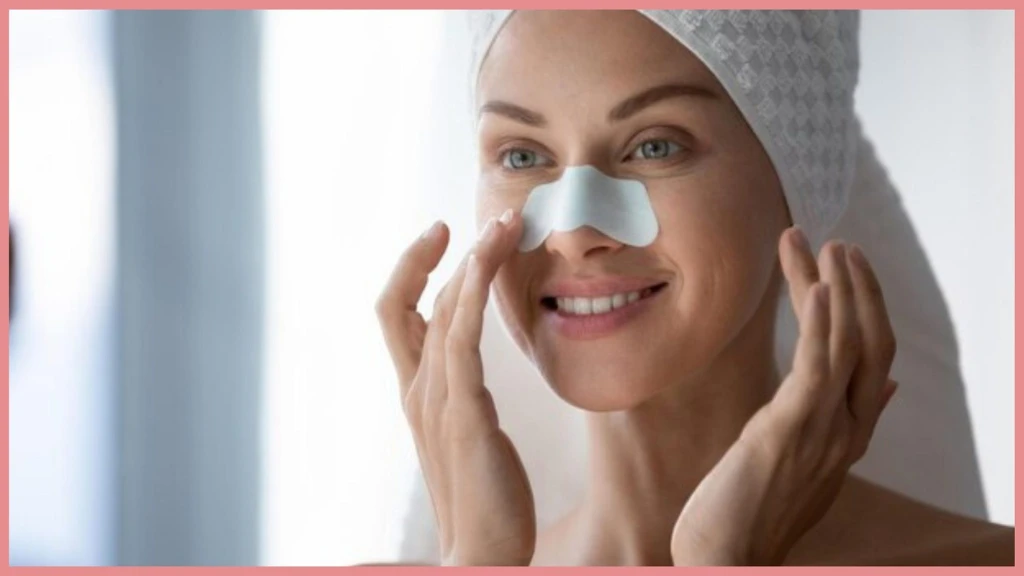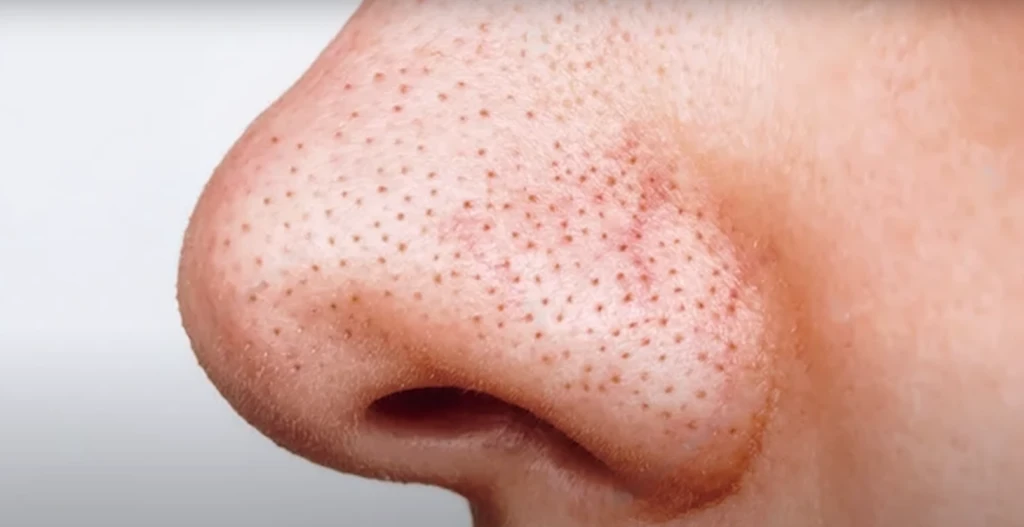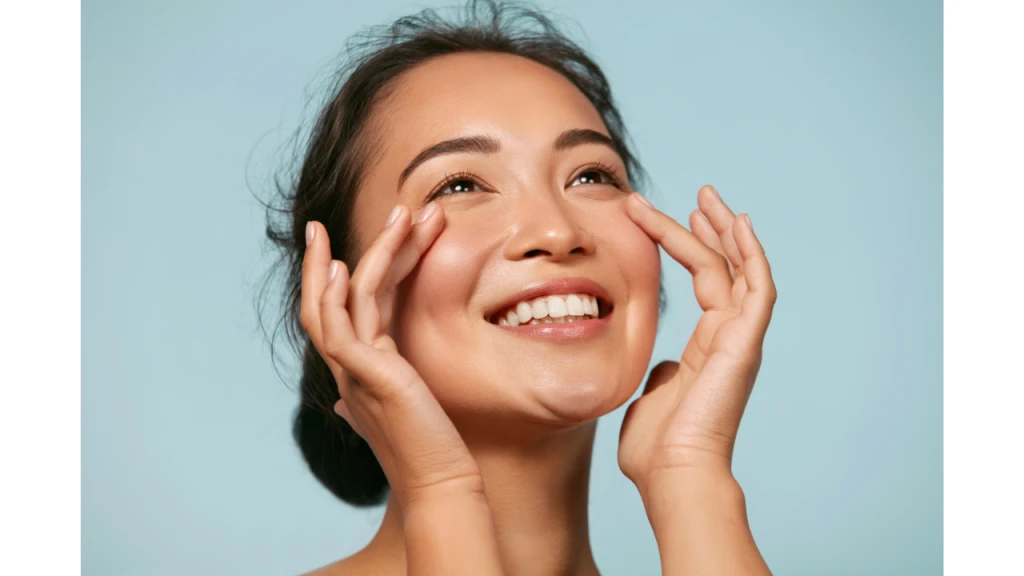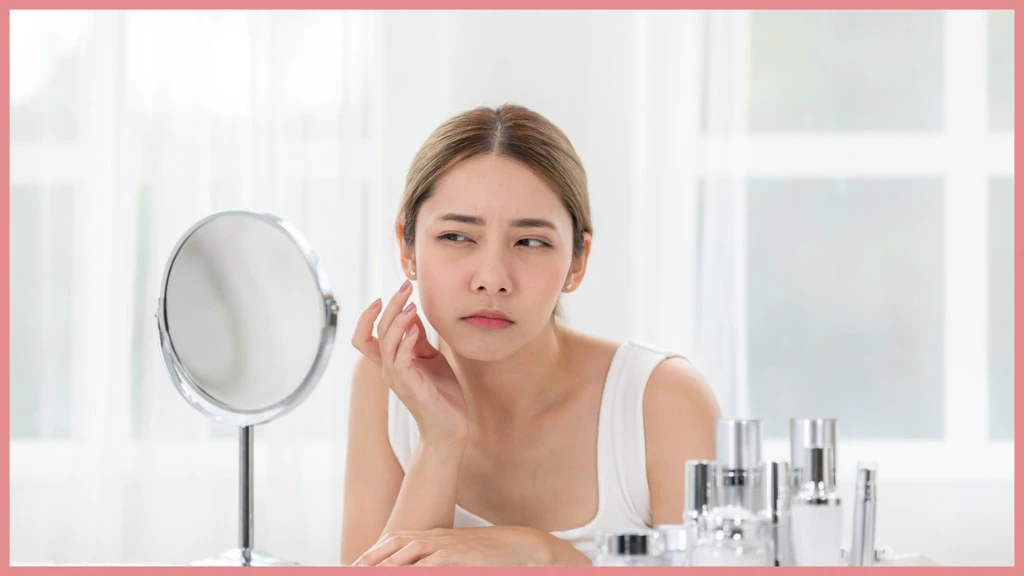How to Get Rid of Sebaceous Filaments Safely

When you catch a glimpse of your nose in the mirror, have you ever noticed those tiny, dot-like patterns clustered in your pores? They’re not blackheads or dirt—those are sebaceous filaments.
If you’ve tried everything to smooth them out and still feel frustrated when they come back, trust me, you’re not alone. I’ve been there too—doing everything I can to get my dark skin glowing again.
So, let’s break it down—what they actually are, why they’re totally normal, and the safest ways to manage them without messing up your skin.
Spoiler: They can’t be erased permanently, but there’s plenty you can do to keep your skin looking its best. I'll show you how.
Safe Techniques to Manage Sebaceous Filaments
What Are Sebaceous Filaments?

Sebaceous filaments are part of your skin’s natural structure. They’re made up of sebum (your skin’s natural oil) and dead skin cells that line the inside of your pores. Their job is to transport sebum to the skin’s surface, which helps keep it hydrated and protected.
Some people notice them more because of genetics, hormones, or their skin type. Oily skin, in particular, can make them stand out.
Sebaceous filaments are often mistaken for blackheads, but they serve a different function in your pores. If you’re wondering why your pores look bigger or how to properly treat your skin, you might also want to check out the right way to heal pimples.
Unlike blackheads, which are clogged pores, sebaceous filaments are natural and healthy—though they can sometimes look more prominent if your pores are larger or your skin produces more oil.
It’s a common myth that these filaments appear because of unclean skin. That’s not true! They’re a normal part of the skin’s function. What does affect their appearance is pore size, which is often determined by genetics.
What Makes Sebaceous Filaments More Visible?
Sebaceous filaments are influenced by several factors that can make them more noticeable, especially when your skincare routine or environmental conditions exacerbate their prominence.
- Age: Hormonal fluctuations during puberty often lead to increased oil production, causing sebaceous filaments to become more visible. As you age, the skin loses elasticity, leading to sagging and the appearance of larger pores, which makes these filaments stand out even more.
- Over-washing or Harsh Products: Over-cleansing the skin with harsh, stripping products disrupts its natural balance. This can trigger an overproduction of sebum as the skin attempts to compensate for lost moisture, making sebaceous filaments appear more pronounced.
- Sun Exposure: Prolonged exposure to UV rays damages the skin’s structural proteins, such as collagen and elastin. This weakens elasticity, resulting in larger-looking pores where sebaceous filaments become more apparent.
- Thicker Hair Follicles: Individuals with naturally thicker hair follicles are more likely to notice sebaceous filaments. The width of the follicle allows more sebum to accumulate, highlighting these natural structures.
Essential Skincare Habits for Healthy Pores

To manage sebaceous filaments safely, adopting a consistent skincare routine is key. Let’s start with the basics:
Oil Cleansing
Oil cleansing is a gentle way to dissolve excess sebum and unclog pores without stripping your skin. If you have oily skin, don’t be afraid of this step—it’s all about balance.
- Use oils like jojoba or grapeseed, which are lightweight and non-comedogenic.
- Massage the oil into dry skin for about a minute, focusing on areas with visible sebaceous filaments.
- Add a splash of water to emulsify the oil, then rinse it off or wipe with a warm, damp cloth.
Proper Cleansing
I’ve found that using a sulfate-free cleanser like the (Pink Cloud Jelly Cleanser) from Amazon.com is a game changer—it gets my skin clean without stripping away its natural moisture. And if you wear makeup, double cleansing is a must. It helps remove makeup and any leftover impurities, leaving your skin feeling fresh and balanced.
Hydration
Keeping your skin hydrated is vital for maintaining balance. Opt for non-comedogenic moisturizers with humectants like hyaluronic acid and occlusives like squalane to lock in moisture.
Sun Protection
Sunscreen is a must for everyone, regardless of skin tone. For those with darker skin like mine, protecting against sun damage helps minimize hyperpigmentation and inflammation.
Look for a broad-spectrum SPF of 30 or higher to shield your skin without clogging your pores.
Healthy Lifestyle Habits
- Diet and Hydration: A balanced diet rich in fruits, vegetables, and water supports overall skin health.
- Stress Management: Stress can lead to hormonal fluctuations that increase oil production.
- Thorough Makeup Removal: Leaving makeup on overnight can worsen clogged pores. Use micellar water or a gentle cleansing balm to ensure a clean slate.
- Hands Off: Avoid touching your face frequently to prevent transferring bacteria and oil.
Safe and Effective Methods for Managing Sebaceous Filaments
Managing sebaceous filaments isn’t about removing them entirely but reducing their appearance safely.
Topical Treatments
I’ve learned that topical treatments can be a great way to tackle sebaceous filaments without messing up your skin’s overall health. The key is finding the right ingredients—it really makes all the difference in managing their appearance effectively.
Salicylic Acid
Salicylic acid is a BHA (beta-hydroxy acid) that penetrates pores to exfoliate and unclog them. Use it in cleansers, toners, or serums a few times a week to prevent build-up. You can try the The Ordinary Salicylic Acid 2% Anhydrous Pore Clearing Serum from Amazon.com.
Retinoids
Retinoids increase cell turnover and reduce oil production, making them effective for long-term management. Start with a low concentration and introduce it gradually to avoid irritation.
Azelaic Acid
This gentle ingredient has anti-inflammatory properties and helps refine pores, making it great for sensitive skin.
Niacinamide
Known for regulating sebum and minimizing pore appearance, niacinamide is a versatile ingredient available in serums and moisturizers.
Sulfur
Sulfur helps control oil and reduce inflammation. It’s best used sparingly in masks or spot treatments.
Vitamin E
As an antioxidant, vitamin E supports skin health and can complement other treatments for sebaceous filaments.
Gentle Exfoliation
I’ve noticed that exfoliating really helped me with sebaceous filaments by getting rid of dead skin cells that make them stand out more. The trick is to stick with gentle methods so you don’t mess up your skin barrier in the process.
Clay Masks
Kaolin and white clay are ideal for sensitive skin, as they draw out impurities without over-drying. Use them once or twice a week.
Konjac Sponges
These natural sponges offer mild exfoliation. Always soak them thoroughly and use light, circular motions.
Chemical Exfoliation
AHAs like glycolic acid and BHAs like salicylic acid are excellent for removing dead skin gently. Choose the right concentration for your skin type and use sparingly.
What NOT to Do
When it comes to dealing with sebaceous filaments, knowing what not to do is just as important as knowing what works. I’ve learned that some methods might seem effective at first but can actually cause long-term damage. Here are a few common mistakes you’ll want to avoid:
Harsh Scrubs
Scrubs containing rough particles like apricot kernels or walnut shells might feel satisfying but can create microtears in the skin’s surface. These tiny tears not only cause irritation and redness but also leave your skin vulnerable to bacteria and inflammation.
Aggressive Extractions
Squeezing pores or using DIY extraction tools often leads to more harm than good. This practice can result in scarring, infection, and even dark spots, especially for those with darker skin tones.
If extractions are necessary, seek a licensed dermatologist or esthetician for professional care.
Overusing Pore Strips
While pore strips can provide a temporary sense of cleanliness, using them too frequently or incorrectly can weaken your skin’s barrier. Over time, this may cause pores to appear larger and skin to become more sensitive.
Skin Gritting
This trendy method involves overloading the skin with oils and exfoliants to "purge" impurities. In reality, it strips the skin’s protective barrier, often leaving it irritated and inflamed. Always prioritize gentler techniques that respect your skin’s natural balance.
Conclusion
Sebaceous filaments are a normal part of your skin’s structure—not a flaw to eliminate. Managing them is about balance, not perfection. With the right habits and treatments, you can minimize their appearance while keeping your skin healthy and radiant.
Remember, healthy skin isn’t about being flawless; it’s about caring for and embracing the skin you’re in.



